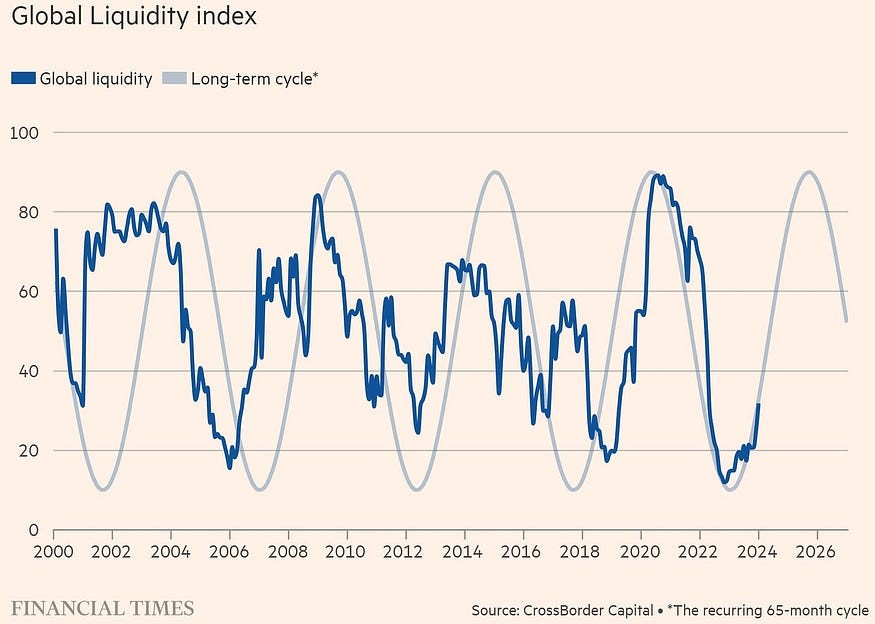Everyone has the brainpower to make money in stocks. Not everyone has the stomach.
—Peter Lynch
You already know this.
We’ve just experienced the sharpest interest-rate hiking cycle since 1988.
For some people, it’s been a passing inconvenience to grumble about. Meanwhile, for others, it’s been an earth-shattering event, turning their lives upside down.

Source: Image generated by OpenAI’s DALL-E
So, what separates the two different realities? Well, I suspect that your own personal experience with interest rates might come down to exactly how much debt you hold in your name:
- For example, if you’re a baby boomer (born between 1946 to 1964), you will tend to have little to no debt. You’ve already built up a respectable asset base. Plus, you already have past experience of previous monetary-tightening cycles. Therefore, you’re mentally prepared. Mentally fortified.
- However, if you’re a millennial (born between 1981 to 1996), you will tend to have a heavier debt burden. You haven’t had the chance to accumulate wealth. Worse still, your experience of previous cycles is limited. So, you may have drifted into the danger zone. Not knowing how vulnerable you really were.
Indeed, the stress of higher borrowing costs has been profound. And it doesn’t just affect individuals. It’s been impacting companies too:
- Their ability to raise money and invest in capex (capital expenditure) has been constrained. Perhaps even strangled.
- In the best-case scenario, a company might adapt and improvise in order to get through this difficult time. But in the worst-case scenario, a company might just buckle under the pressure, bleeding out, collapsing into insolvency.

Source: Image generated by OpenAI’s DALL-E
What’s the main problem here? Well, it’s all about access to liquidity:
- Just imagine this. Our global economy is like a mighty train locomotive. It’s chugging along the countryside. And liquidity is like lubrication oil. It keeps the gears and pistons of this engine moving smoothly.
- But what happens when you drain that oil away? Well, the machinery starts to groan and squeal. Sparks fly. Metal grinds on metal. The train convulses from the friction. It starts decelerating.
- So, in a blink, the train has gone from seamless motion to a pretty rough ride. Ouch.
Indeed, this is exactly what hiking interest rates has done to our financial system. It has drained liquidity in a hurry:
- As a result, the four most important pillars in our economy — production, consumption, capital, and labour — have started to slow down.
- Certainly, you might argue that this is the source of all the pain that we’ve been experiencing lately.
However, the tide is turning now. We’re seeing a glimmer of hope. A ray of sunshine:
- Earlier this month, the Reserve Bank of New Zealand did an interest-rate cut of 25 basis points. This follows a sequence of cuts that have already been carried out by several central banks in Europe.
- Meanwhile, the most powerful central bank of them all — the United States Federal Reserve — is widely expected to do its first rate cut on September 18.
Last Friday, Fed chairman Jerome Powell delivered a speech at the Jackson Hole Economic Symposium. Here’s what he said:
‘The time has come for policy to adjust. The direction of travel is clear, and the timing and pace of rate cuts will depend on incoming data, the evolving outlook, and the balance of risks.
‘We will do everything we can to support a strong labor market as we make further progress toward price stability. With an appropriate dialing back of policy restraint, there is good reason to think that the economy will get back to 2 percent inflation while maintaining a strong labor market.’
Let me translate this into plain English for you:
- Interest rates are set to fall. The goal here is stability. This is where the economy stays reasonably balanced, while inflation comes under control.
- According to CME Group’s FedWatch, there’s a 76% chance that the Fed will cut by 25 basis points in September. However, there’s also a 24% chance that the Fed may go for a more jumbo-sized cut, which is 50 basis points.
- Either way, this means that the gears and pistons of this train engine will be oiled up once more. They will start to move with more conviction. Gaining speed. Generating momentum.

Source: Medium
So, what does this mean for the longer-term? Well, the Global Liquidity Index is perhaps the best measure of liquidity on the planet:
- It analyses the balance sheets of not just the US Federal Reserve, but other major central banks in Europe, Asia, and South America.
- The macroeconomic trend here is clear. We can see that liquidity is thawing out from the deep freeze of 2022. It’s transitioning into a bold upswing now. There’s less scarcity. More abundance.
- This rising tide of liquidity suggests that we will experience easier access to money and credit. Potentially, this will lead to increased investment confidence, which will lead to growth in asset prices.
Of course, the media isn’t covering this trend as fairly as they should. In fact, if you read the news today, you might be distracted by a lot of background noise:
- The media is talking about Israel and Iran.
- The media is talking about Ukraine and Russia.
- The media is talking about Trump and Harris.
But is the media actually offering us factual information? Or are they simply spoon-feeding us with angertainment?
- Well, if you’re looking for truth, perhaps the history of the stock market might offer you a clue.
- Look back over the past 400 years. Study every economic cycle. You will notice a fascinating pattern, repeating itself over and over.
- Each time the market weakens sharply, it happens because liquidity is being drained from the financial system.
- Meanwhile, each time the market strengthens sharply, it happens because liquidity is being injected into the financial system.
Therefore, liquidity is the single-most powerful force on Earth. It’s more profound than war. More consequential than politics. Indeed, liquidity moves the economic needle on a much bigger scale than anything else:
- So right now, in 2024, I can already sense that the mighty engine of the market is being warmed up. I can hear the whistle being blown. The train appears ready to leave the station.
- This may well be the time for rational investors to sit up and take notice. Perhaps the final call for boarding is already happening?
It’s time to have your say
I hope that you’ve enjoyed reading our articles as much as we’ve enjoyed writing them:
- Your prosperity is our focus — which is why we are always working hard to uncover new opportunities beyond the radar for you.
By the way, I have a small favour to ask:
- Would you like to write a review of our work here at Wealth Morning?
- Do you want to let us know if our stories have inspired you in a positive way?
- Do you want to let us know if our stories have helped you become a more successful investor?
We truly value your feedback It encourages us. It helps us to do better. It helps us to reach further:
- So, if you’d like to leave us a review, it’s quick and easy. It will only take two minutes of your time.
- Thank you so much in advance for your kindness and generosity. Your readership keeps us going!
Regards,
John Ling
Analyst, Wealth Morning
(This article is the author’s personal opinion and commentary only. It is general in nature and should not be construed as any financial or investment advice. Wealth Morning offers Managed Account Services for Wholesale or Eligible investors as defined in the Financial Markets Conduct Act 2013.)





John is the Chief Investment Officer at Wealth Morning. His responsibilities include trading, client service, and compliance. He is an experienced investor and portfolio manager, trading both on his own account and assisting with high net-worth clients. In addition to contributing financial and geopolitical articles to this site, John is a bestselling author in his own right. His international thrillers have appeared on the USA Today and Amazon bestseller lists.